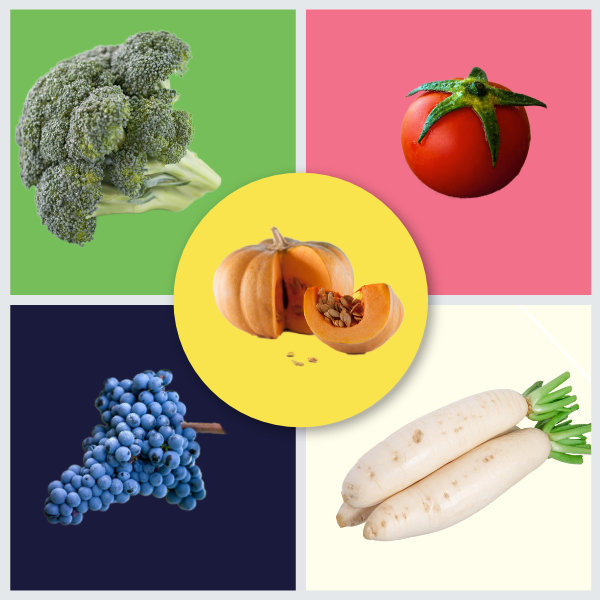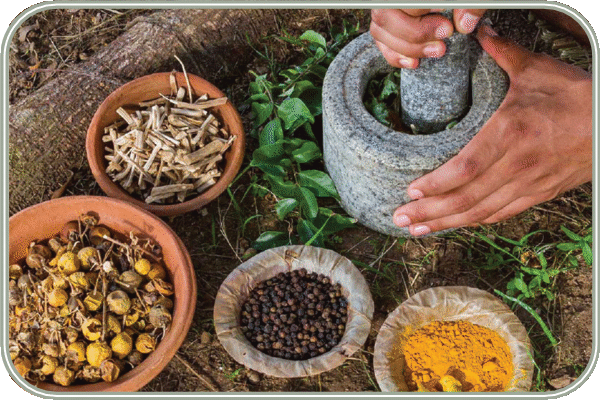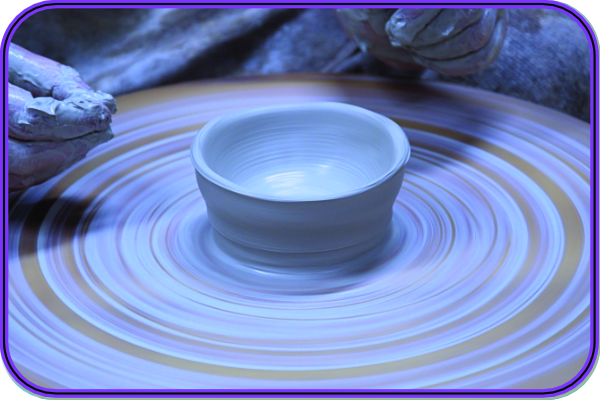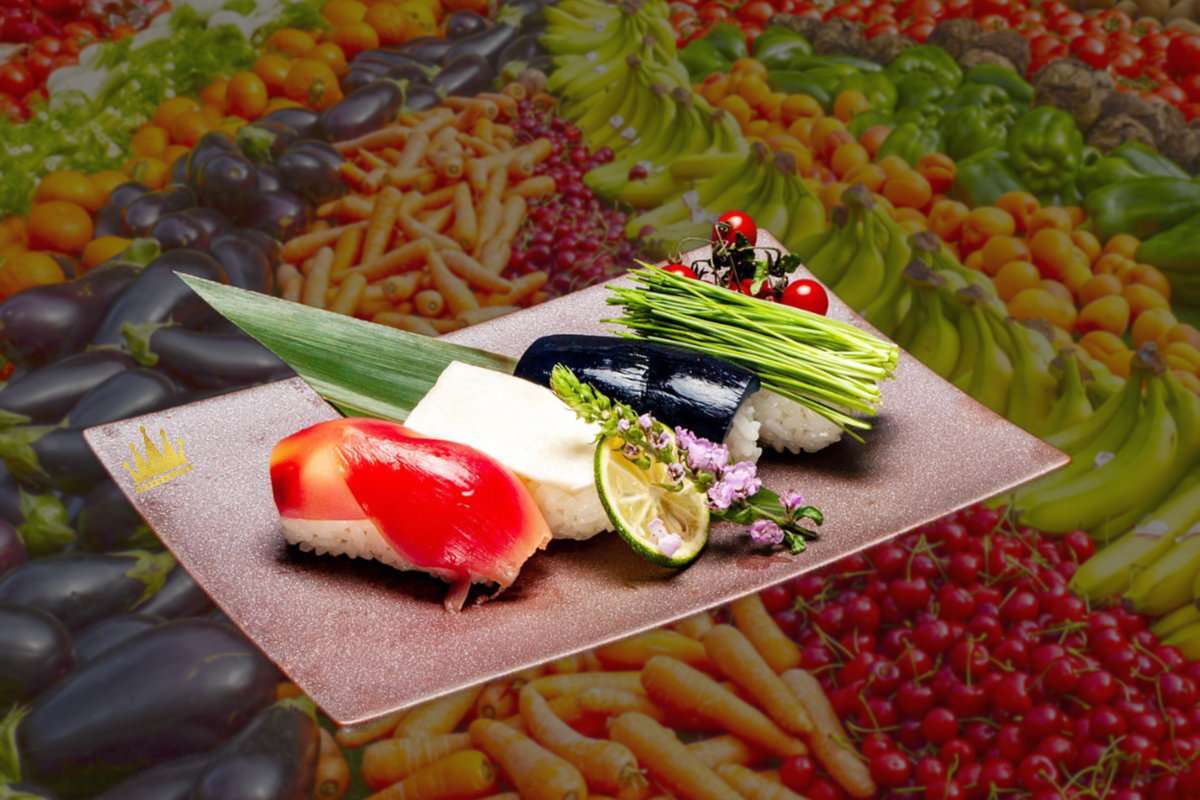A balanced diet with colors
Color has always played an important role in human life. Indeed, colors have an impact on our body and mind through the vibration they emanate. “Every color excites a particular disposition in the soul” wrote Goethe.
Some, like blue, are known to stimulate and encourage creativity. Others have soothing virtues. Interior designers, like Feng Shui masters, use them to design their living spaces.
When it comes to food, colors also have their say. In fact, colors play more than just an aesthetic role. They reveal nutritional and energetic properties that influence our physical and mental health, and therefore our well-being.
Traditional Chinese medicine has taken colors into account in its dietetics. Recently, phytochemistry has also explored the composition of the various natural pigments that color our fruits and vegetables. And it demonstrates their nutritional value. The study of these two approaches proves the value of putting more color on our plates.
The TCM approach
Chinese dietetics has always been interested in colors, as well as flavors, food textures and so on. It has classified foods by color according to the theory of the Five Elements. Each color is associated with a season and two organs.
Green – Wood (Spring)
- Organs: Liver and gallbladder
- Green is associated with growth, renewal and upward energy. Green vegetables such as spinach, broccoli and kale support the liver by detoxifying the body and stimulating circulation.
Red – Fire (Summer)
- Organs: Heart and small intestine
- Red symbolizes warmth and vitality. Red foods, such as tomatoes, strawberries and red peppers, strengthen the heart and promote blood circulation. They also provide an energizing boost.
Yellow – Earth (Late summer)
- Organs: Spleen and stomach
- Yellow foods (squash, corn, sweet potato) stimulate digestion and support the energy of the spleen, which is considered the main source of vital energy in TCM.

White – Metal (Autumn)
- Organs: Lungs and large intestine
- White is associated with purity and refinement. White foods, such as turnips, garlic and cauliflower, strengthen the immune system and support the lungs.
Black or violet – Water element (Winter)
- Organs: Kidneys and bladder
- Black represents depth and rest. Black foods, such as black beans, black mushrooms or black sesame, nourish the kidneys and promote regeneration.
This energetic approach to color allows us to choose foods according to seasonal rhythms and the body’s internal needs.
The phytochemical approach
The vibrant colors of fruits and vegetables are due to natural pigments, which are also bioactive compounds with health-promoting properties. Interestingly, as with TCM, they’re not just there to look pretty. Here are some of the main families of pigments and their effects on our health.
- Carotenoids (red, orange, yellow): Found in carrots, pumpkins, mangoes, etc., they are rich in antioxidants and contribute to eye and immune health.
- Flavonoids (blue, violet, yellow): Abundant in blueberries, grapes, eggplants, citrus fruits, etc., they have anti-inflammatory properties; they strengthen blood vessels and protect against premature aging.
- Chlorophyll (green): Found in green leafy vegetables, it promotes detoxification and healthy blood.
- Lycopene (red): Found in tomatoes, watermelons and pink grapefruit. This powerful antioxidant is recognized for its protective properties against cardiovascular disease and certain cancers, notably prostate cancer.
- Anthocyanins (blue, violet, dark red): Found in blueberries, black grapes and eggplants, these water-soluble pigments prevent neurodegenerative diseases and promote better cognitive health. They also have anti-inflammatory properties.
It’s interesting to note that these two approaches, however far apart they may be, converge on a common observation. Paying more attention to color in the composition of our meals ensures an optimal intake of nutrients. This in turn improves the overall balance of our organism.
Colors thus provide a wide range of benefits for our health and balance. What’s more, through their visual impact, colors also have the virtue of whetting our appetites and delighting our senses.
The five colors of TCM

Green: spinach, broccoli, kale, green beans, lettuce…
Red: tomatoes, red peppers, strawberries, cherries, watermelon…
Yellow: pumpkin, mango, sweet potato, corn, banana…
White: white turnip, garlic, onion, cauliflower, pear…
Black/Dark blue: black grapes, eggplant, blackberries, blueberries, black beans…







0 Comments